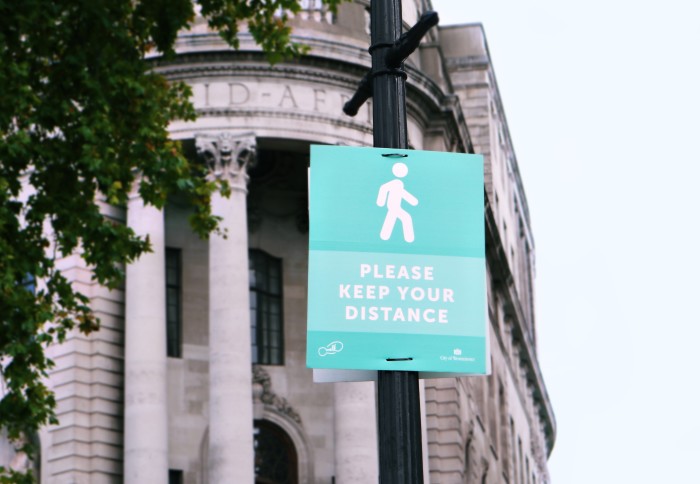Coronavirus infections levelling off in England, REACT study shows

The rate of new coronavirus infections in England is no longer on a downward trend and has flattened, data from Imperial’s REACT study suggest.
Swab tests on over 160,000 people taken between 13th November and 3rd December show that around 1 in 110 was infected, or 0.94% of the population.
We're seeing a levelling off, driven by clusters of infections in certain regions and age groups. Prof Paul Elliott School of Public Health, Imperial
The study's recent interim findings, which looked at the first 105,000 test results, showed that infection prevalence fell by approximately 30% during the second half of November. But the latest report shows that despite lockdown the decline wasn’t sustained, with infections levelling off in the final 10 days of the study.
Across the whole study period, the national R was around 1 at 0.96. If R goes above 1, it means that the epidemic is growing again.
Patterns of infection have been uneven across the country and some areas experienced a rise in infections, including London where R was found to be over 1. School-age children are also the most affected age group, which could be linked to schools remaining open during lockdown.
Professor Paul Elliott, director of the programme at Imperial, said: “During the first half of lockdown our study showed that infections were on a clear downward trajectory, but we’re now seeing a levelling off, driven by clusters of infections in certain regions and age groups. Behaviours and public health measures need to be guided by this fast-changing situation to prevent it from worsening, and everyone has a part to play in keeping this virus at bay, especially as we approach a relaxing of rules over Christmas.”
These findings from the REal-time Assessment of Community Transmission (REACT 1) programme, carried out in partnership with Ipsos MORI, are available in a pre-print report and will be submitted for peer-review.
Signs of coronavirus growth
The REACT 1 study is tracking current cases of COVID-19 in the community by testing more than 150,000 randomly-selected people each month over a two-week period. Volunteers take throat and nose swabs at home, which are then analysed in a laboratory by a technique called RT-PCR.
Out of 63,059 tests carried out between 24th November and 3rd December for the second half of this study round, 478 people were positive, giving a prevalence of 0.91% or 91 per 10,000. This is a slight drop compared with the study’s recent interim findings, where 1 in 100 had the virus or 0.96% as of 24th November. In total 168,181 people were tested for this round, with 1,299 positive tests or an overall prevalence of 0.94% across the two-week period.
We need to understand why the effectiveness of lockdown appears to be uneven so that future strategies can be better tailored to the evolving epidemic. Prof Steven Riley study author, Imperial College London
Overall for this round R is around 1 at the national level, but some areas are now above 1 including London (1.27), which has the highest R of all regions, while the lowest R was found in the West Midlands at 0.60.
The West Midlands also saw the proportion of infected people drop by half across this study round, from 1.55% to 0.71%. Falls were also seen in the East Midlands and the North West. Whereas London and Yorkshire and The Humber experienced a rise in infections, with the latter now showing the highest prevalence in the country at 1.39%. Patterns of infection also varied across London, with the highest infection rate in the east and south-east.
Professor Steven Riley, study author and Professor of Infectious Disease Dynamics at Imperial, said: “It’s encouraging that lockdown did have an impact across England, but our study has picked up some concerning signs of growth in some parts of the country. We need to understand why the effectiveness of lockdown appears to be uneven so that future strategies can be better tailored to the evolving epidemic.”
Trends across different age groups
Across this round of testing, there was a notable fall in prevalence among 18-24-year-olds and rise in infections among children of school age. Prevalence in 5-12-year-olds increased from 1.27% in the first half to 1.70%, and for those aged 13-17 it rose from 2.01% to 2.08%. The government recently announced that it would introduce mobile testing in schools across the worst affected areas to tackle rising rates in this age group.
Kelly Beaver, Managing Director - Public Affairs at Ipsos MORI, said: “As we end the year, I would like to thank the well over a million people that have taken part in the REACT studies this year which have provided a key data stream for Government to track COVID-19 in real-time across England. We are currently sending out letters asking people to volunteer for the next round of the study which will take place in the new year and I urge people to participate to contribute to this vital body of work.”
Notes
The percentages given for prevalence are weighted. This means that the researchers make adjustments in their calculations so that the figures represent the make-up of England’s population.
Article text (excluding photos or graphics) © Imperial College London.
Photos and graphics subject to third party copyright used with permission or © Imperial College London.
Reporter
Justine Alford
Institute of Global Health Innovation